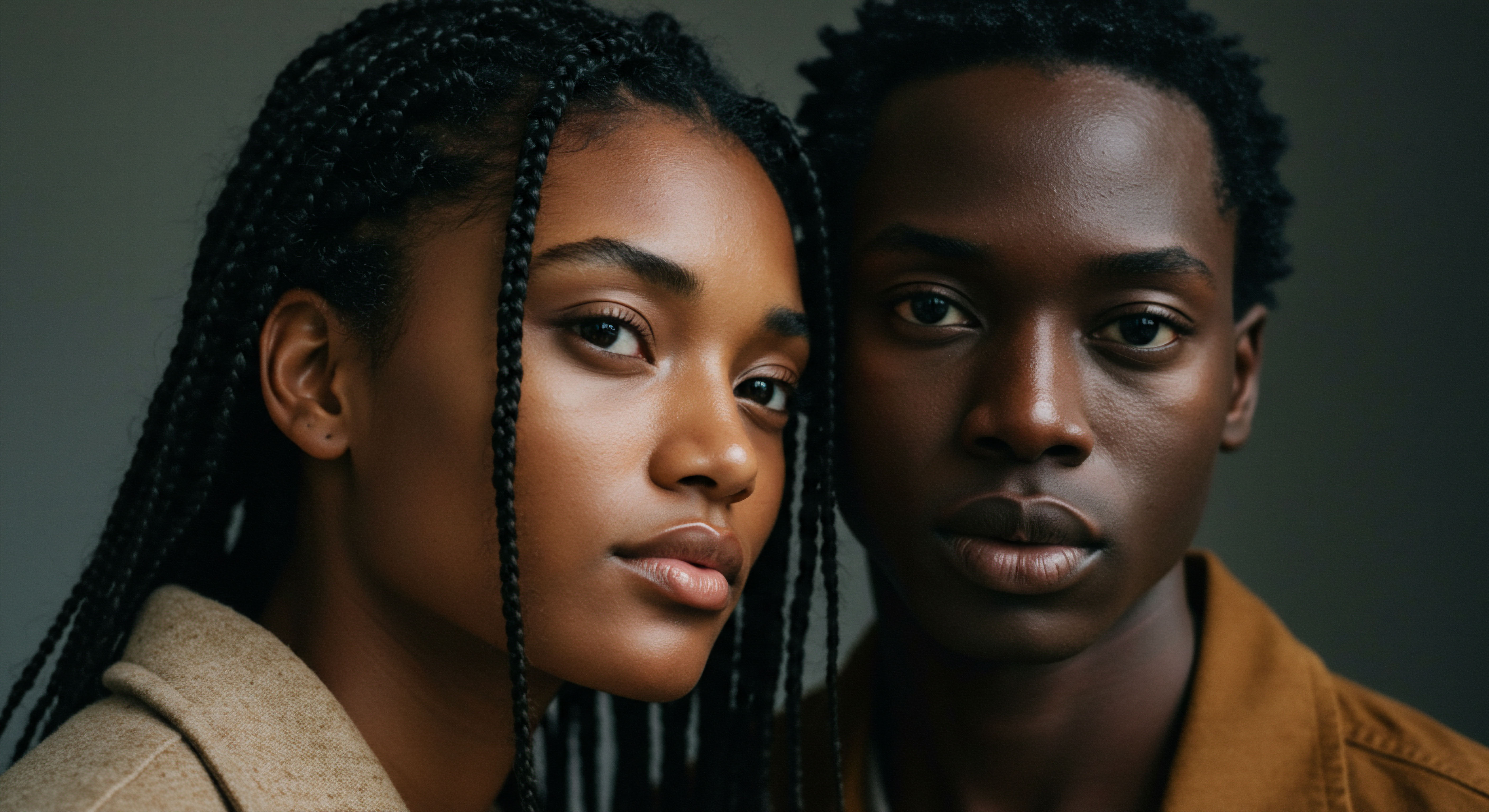
Fundamentals
The gentle descent into evening, a time for rest and renewal, holds a particular significance for textured hair. Here at Roothea, we speak of this intentional nightly practice as Protective Styles Sleep. This concept describes the conscious adoption of specific hair arrangements and coverings before slumber, a thoughtful measure to safeguard the inherent beauty and health of curls, coils, and waves. It is a nightly ritual designed to shield delicate strands from the rigors of friction and the silent drain of moisture that can occur during sleep.
For those with textured hair, especially within the Black and mixed-race communities, the hours of repose present a unique challenge. Unlike straighter hair types that might glide effortlessly across a pillow, the intricate patterns of curls and coils are more prone to tangling and mechanical stress. The very act of shifting during sleep can cause hair strands to rub against abrasive surfaces, leading to undesirable outcomes. Protective Styles Sleep is the practical application of foresight, transforming the vulnerable nighttime hours into a period of deep care and preservation.
Protective Styles Sleep signifies the deliberate nighttime safeguarding of textured hair through specific styling and coverings, preserving its health and vibrancy.
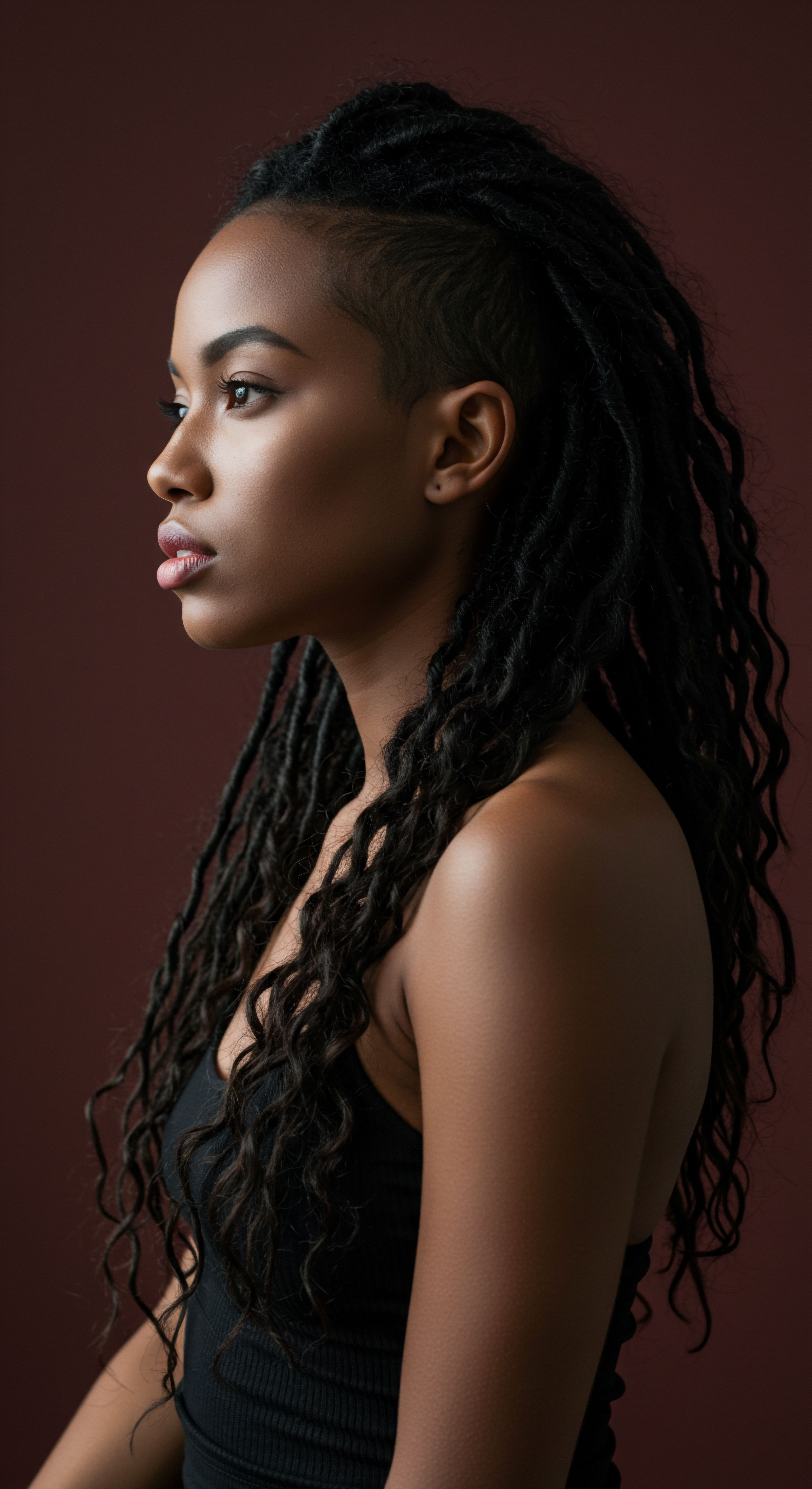
Understanding the Nighttime Challenge
Our hair, a crown we wear daily, faces unseen adversaries as we drift into sleep. The seemingly benign act of resting our heads can introduce a surprising amount of stress to our strands. This is particularly true for textured hair, which, by its very design, possesses a distinct architecture.
Each curl and coil, while resilient, also presents more points of contact with external surfaces, amplifying the potential for disruption. The objective of Protective Styles Sleep is to counteract these nocturnal forces, ensuring that hair awakens refreshed and intact.
- Friction ❉ The constant rubbing against common pillowcase materials, such as cotton, can create micro-abrasions along the hair shaft. This friction can roughen the hair’s outer layer, the cuticle, leading to frizz and eventual breakage.
- Moisture Loss ❉ Many traditional bedding fabrics possess absorbent qualities, drawing essential hydration away from the hair and scalp. This desiccation can leave textured hair feeling dry, brittle, and more susceptible to damage.
- Tangles and Knots ❉ Unsecured hair can become a tangled web during sleep as movements cause strands to interlock. Detangling efforts in the morning can then lead to further breakage and frustration.
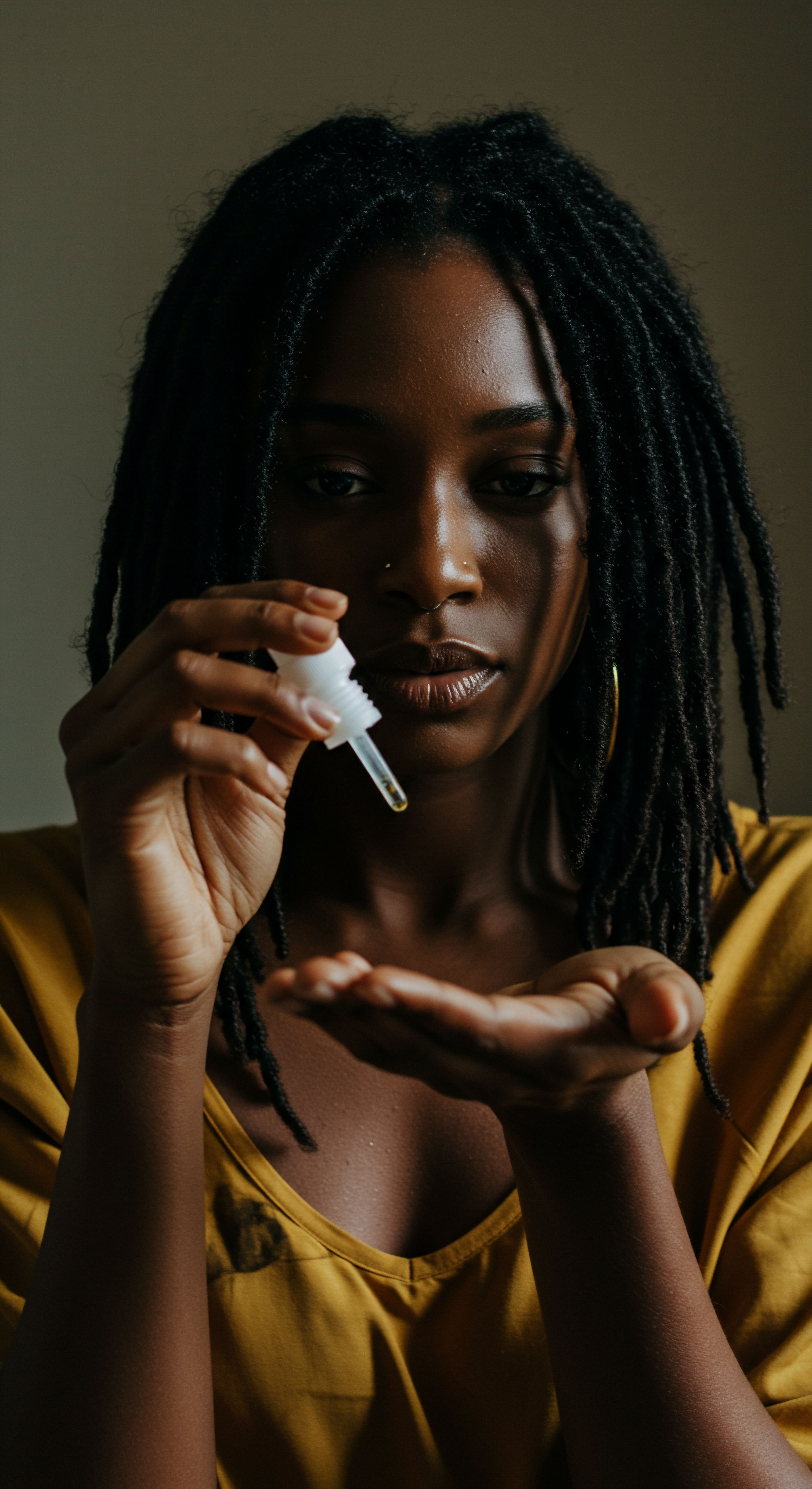
The Simple Meaning of Protective Styles Sleep
At its simplest, Protective Styles Sleep refers to any intentional action taken to shield hair while sleeping. This could be as straightforward as gathering hair into a loose arrangement or as purposeful as wrapping it in a smooth fabric. The underlying purpose remains constant ❉ to minimize the environmental stressors of the sleep period.
This thoughtful practice contributes significantly to maintaining the integrity of textured hair, allowing it to retain its moisture, definition, and overall health. It is a fundamental step in a comprehensive hair care regimen, one that acknowledges the continuous nature of care, extending beyond waking hours.
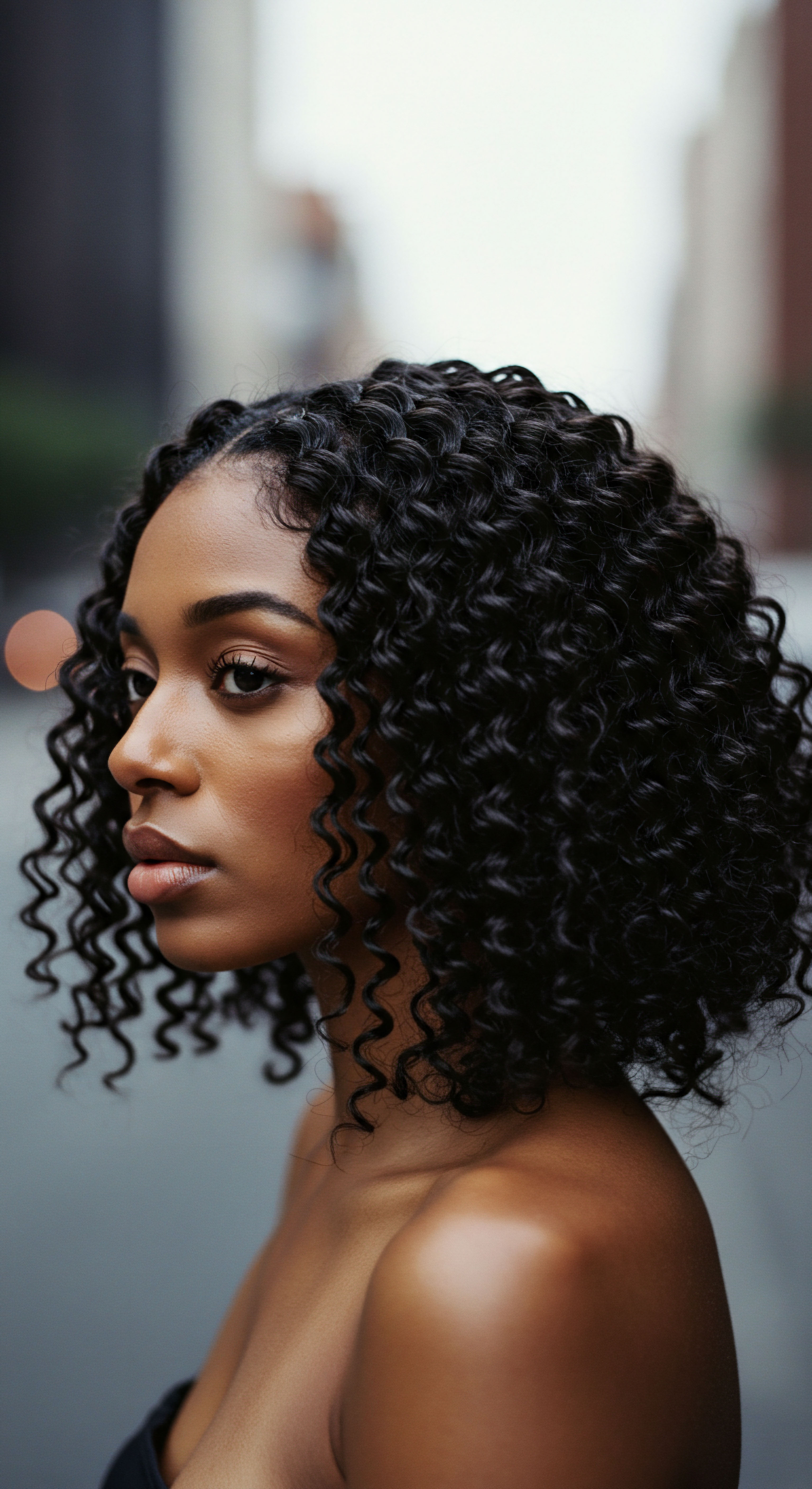
Intermediate
Moving beyond the foundational understanding, Protective Styles Sleep represents a more nuanced approach to nocturnal hair preservation, particularly for textured hair. It transcends the mere act of covering hair; it embodies a conscious commitment to the long-term vitality of curls, coils, and waves. This intermediate perspective recognizes that the hours of rest are not passive but active periods of cellular renewal and structural maintenance for our hair. The practices associated with Protective Styles Sleep become integrated into a weekly or even daily care rhythm, demonstrating a deeper appreciation for hair’s delicate equilibrium.
The selection of specific styles and materials plays a pivotal role in this intermediate application. It reflects an understanding of how different hair textures interact with various fabrics and how particular manipulations can either bolster or undermine hair health. For textured hair, which often possesses a thinner cuticle layer and a natural inclination towards dryness, these considerations are paramount. Choosing the right tools and techniques transforms a simple bedtime routine into a strategic act of care, directly influencing the hair’s resilience and appearance upon waking.
Protective Styles Sleep, at an intermediate level, involves a strategic integration of specific styles and smooth materials into nightly routines, fostering enduring hair health.
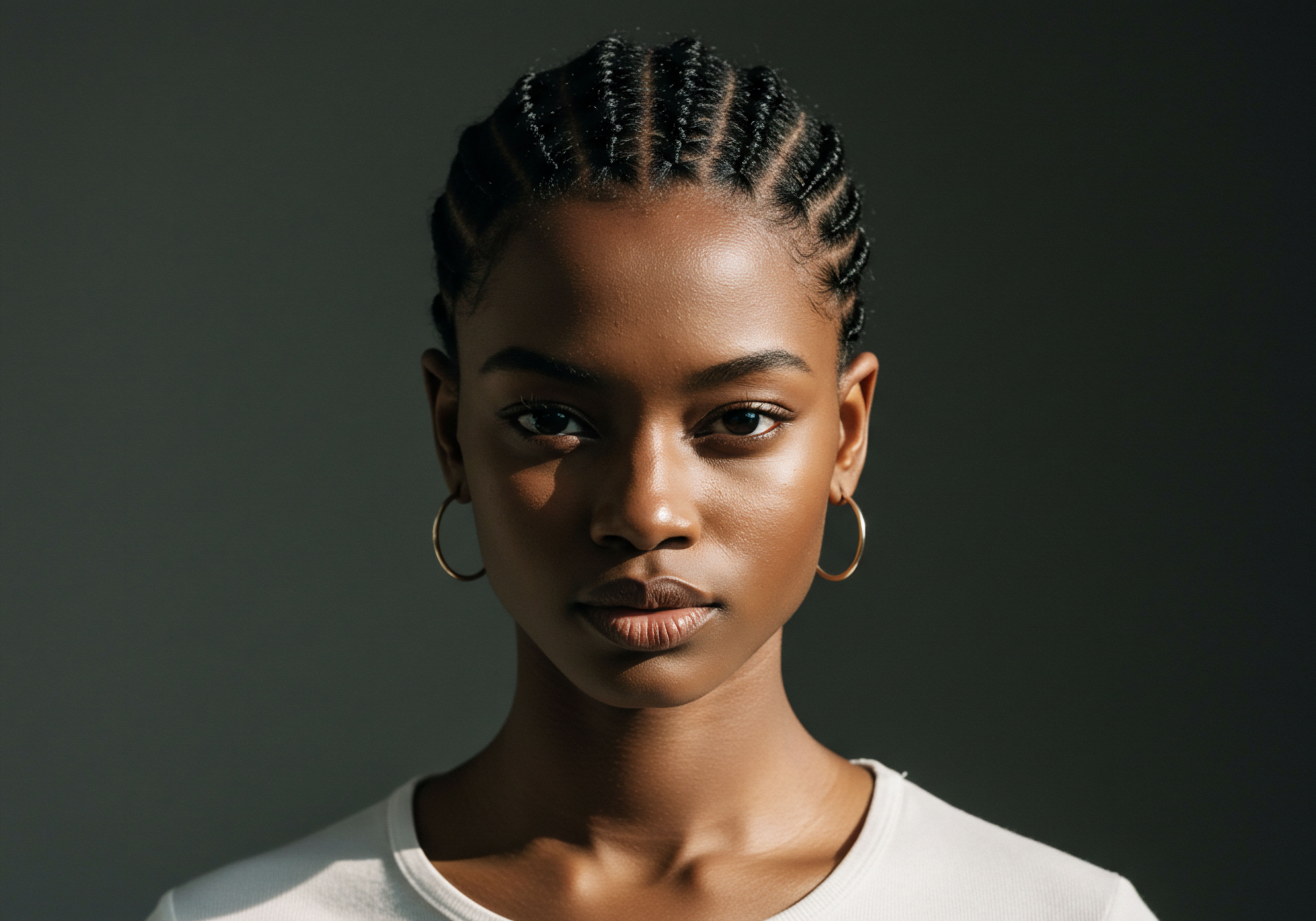
Practical Applications and Common Contexts
The daily or weekly manifestation of Protective Styles Sleep often involves a considered choice of styling. These are not merely aesthetic decisions; they are functional choices aimed at minimizing friction and maximizing moisture retention. The aim is to create a secure, low-tension environment for the hair, allowing it to rest undisturbed. This can mean adopting styles that consolidate the hair mass, reducing individual strands’ exposure to rough surfaces, or enclosing the hair within a gentle barrier.
- Pineapple Method ❉ This involves gathering all hair to the very top of the head, securing it loosely with a satin scrunchie. The hair then cascades down, resembling a pineapple, keeping the bulk of the strands off the pillow and minimizing flattening or frizz.
- Loose Braids or Twists ❉ For longer textured hair, creating one or several loose braids or twists can prevent tangling and knotting overnight. This keeps the hair organized and reduces friction across the entire length.
- Buns or Coils ❉ Hair can be gently coiled into a loose bun at the crown or nape, providing a compact structure that minimizes movement and protects ends. This approach is especially useful for preserving curl definition.
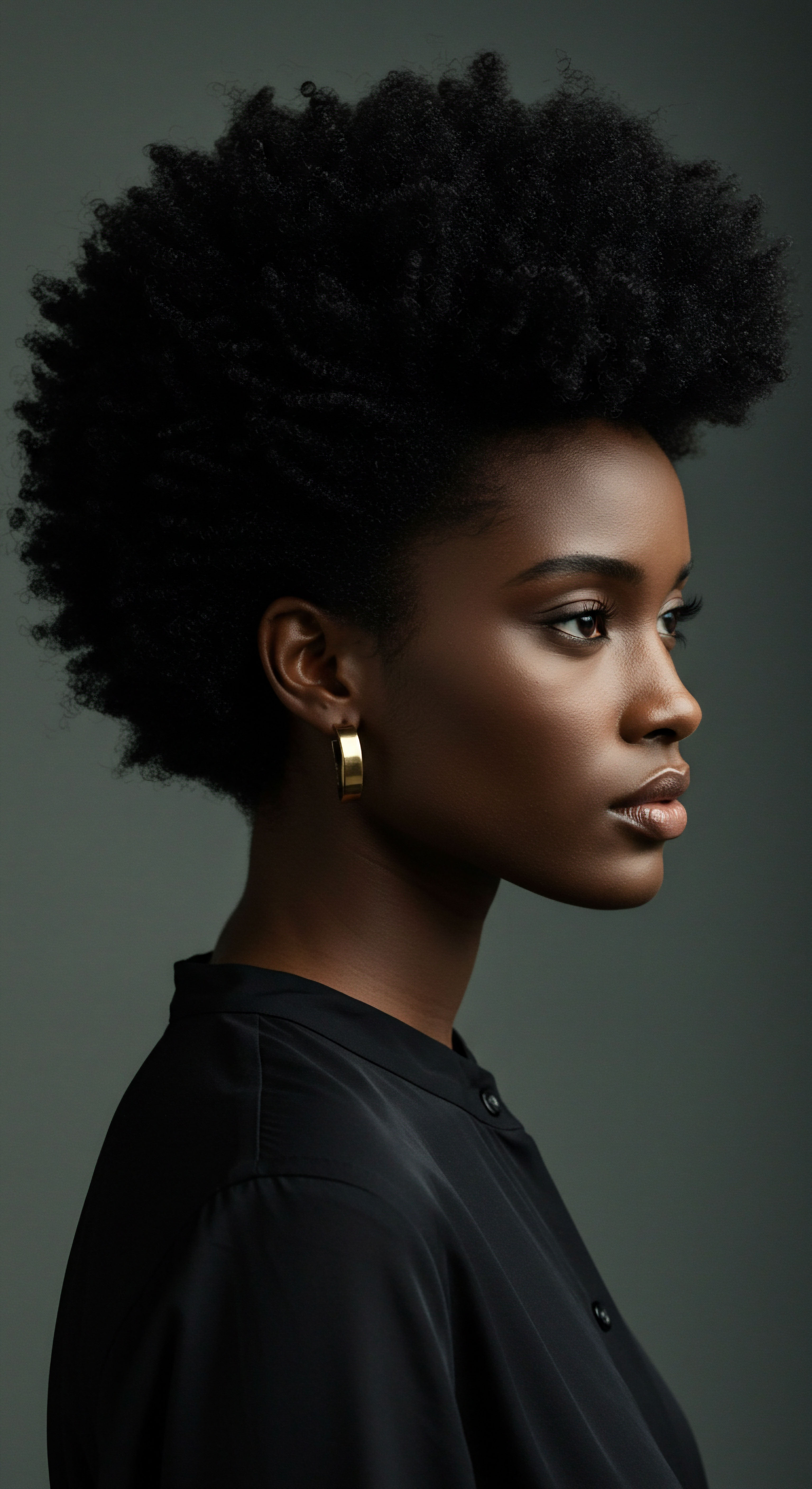
Material Considerations for Nocturnal Preservation
The surface upon which hair rests significantly influences its condition. Traditional cotton pillowcases, while comfortable, are known for their absorbent nature and their tendency to create friction. They can act like a sponge, drawing moisture from the hair, and their fibers can snag and pull at the delicate hair cuticle. In contrast, materials with a smoother surface offer a more forgiving environment.
| Material Silk |
| Key Characteristic Natural protein fiber, exceptionally smooth. |
| Benefit for Textured Hair Reduces friction by up to 51%, minimizes frizz by 43%, and retains moisture. Promotes healthier scalp and strands. |
| Material Satin |
| Key Characteristic Synthetic weave, smooth finish. |
| Benefit for Textured Hair Offers significant friction reduction, helps preserve moisture. A more budget-friendly option than silk. |
| Material Cotton |
| Key Characteristic Absorbent, rougher texture. |
| Benefit for Textured Hair Absorbs moisture from hair, causes higher friction, leading to tangles and breakage. Generally not recommended for optimal hair preservation. |
| Material Selecting materials that glide over hair rather than tugging at it is a foundational step in Protective Styles Sleep. |
Incorporating a silk or satin pillowcase, bonnet, or scarf into the nightly ritual can drastically reduce mechanical stress and moisture loss. These smooth surfaces allow hair to glide, rather than snag, preserving delicate curl patterns and preventing the frizz and breakage often associated with traditional bedding. This conscious shift in material choice elevates the practice of Protective Styles Sleep from a simple habit to a refined element of textured hair care, yielding tangible improvements in hair health and manageability.
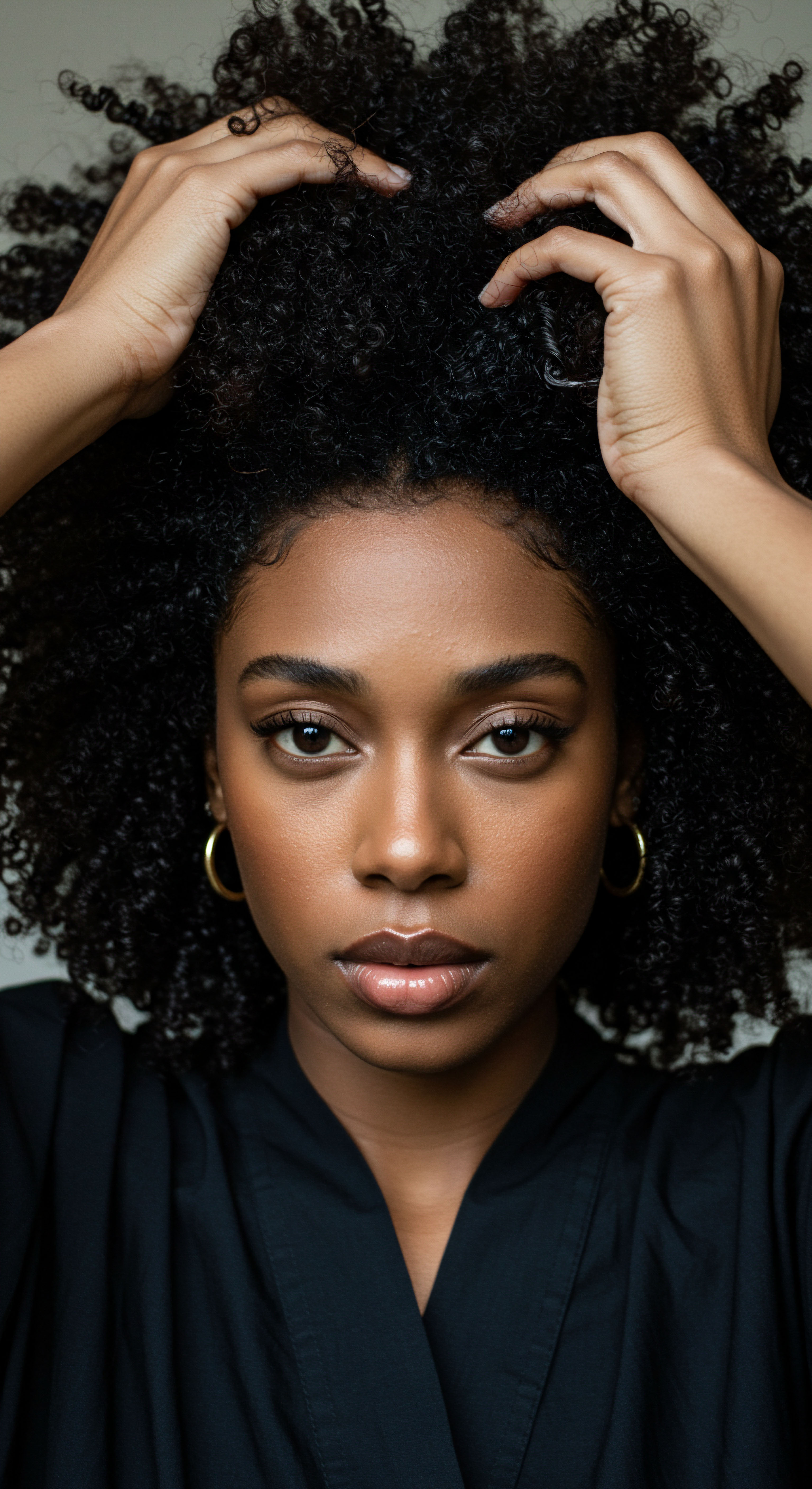
Advanced
The true depth of Protective Styles Sleep extends far beyond simple overnight protection; it signifies a profound understanding of the trichological, socio-cultural, and psychological dimensions that define the textured hair experience. This advanced interpretation acknowledges that nocturnal hair care for Black and mixed-race hair is not merely a cosmetic choice but a historically resonant practice, a scientific imperative, and an affirmation of identity. It is a strategic intervention against the unique vulnerabilities of coily, kinky, and curly strands, and a reclamation of rest as a period of profound cellular restoration and cultural continuity.
At this elevated level of understanding, Protective Styles Sleep is defined as the Intentional, Culturally Informed, and Scientifically Substantiated Practice of Mitigating Nocturnal Mechanical and Environmental Stressors on Textured Hair, Thereby Optimizing Its Inherent Biological Resilience, Preserving Its Structural Integrity, and Contributing to the Holistic Well-Being and Self-Perception of Individuals within the Black and Mixed-Heritage Diaspora. This comprehensive explication recognizes the intricate interplay of genetic predisposition, environmental factors, and historical context that shape textured hair’s needs. It positions nighttime care as a sophisticated dance between physiological demands and cultural expressions, demanding a nuanced approach that transcends surface-level solutions.
Protective Styles Sleep, in its advanced interpretation, is a scientifically and culturally informed practice of preserving textured hair’s integrity during rest, bolstering its resilience and affirming identity.

The Biological Imperative of Nocturnal Hair Preservation
The intricate architecture of textured hair, characterized by its elliptical shaft and numerous twists and turns, inherently renders it more susceptible to mechanical abrasion and moisture evaporation. Unlike straight hair, where natural sebum can easily traverse the shaft, the coily structure of textured hair impedes this natural lubrication, leading to increased dryness. During sleep, the average individual shifts position numerous times, creating repetitive friction between hair and bedding surfaces.
This continuous rubbing can lift and abrade the hair’s cuticle layers, which are already thinner in Black hair types compared to others. Such micro-damage compromises the hair’s protective barrier, leading to increased porosity, accelerated moisture loss, and a heightened propensity for breakage.
Furthermore, sleep itself is a critical period for cellular repair and regeneration throughout the body, including the hair follicles. Hormonal regulation, particularly the release of human growth hormone, occurs predominantly during deep sleep cycles, playing a direct role in hair growth and follicle health. Chronic sleep deprivation, a pervasive issue in modern society, can disrupt these hormonal balances, elevate stress hormones like cortisol, and thereby compromise the hair growth cycle, potentially leading to increased shedding and thinning. Therefore, Protective Styles Sleep is not merely about preserving a style; it is about creating an optimal micro-environment that supports the hair’s natural reparative processes and reinforces its structural fortitude against the silent, nightly assault of mechanical and environmental stressors.

Socio-Cultural Resonance and Historical Continuity
For Black women and individuals of mixed heritage, the practice of safeguarding hair at night carries a profound cultural weight, echoing generations of ingenuity and resilience. The hair bonnet, the silk scarf, the durag—these are not simply accessories; they are artifacts of a shared heritage, tools born from necessity and refined into symbols of self-care and cultural pride. Historically, during periods of enslavement and beyond, Black women devised methods to protect their hair from harsh labor conditions and societal pressures, often using whatever materials were available to preserve their strands and maintain a sense of dignity.
The contemporary practice of Protective Styles Sleep is a continuation of this legacy, a testament to the enduring significance of hair as a marker of identity and a canvas for self-expression within the Black community. It represents a deliberate act of self-preservation in a world that has historically marginalized and misunderstood textured hair. The collective adoption of these nighttime rituals reinforces communal bonds and transmits intergenerational knowledge, serving as a quiet yet powerful form of cultural affirmation. Nancy Redd’s children’s book, Bedtime Bonnet, beautifully illustrates this cultural tradition, portraying a Black family’s diverse nighttime hair routines and the shared understanding of protecting one’s hair.

The Controversial Intersections ❉ Hair Discrimination and Sleep
While the benefits of Protective Styles Sleep are clear for hair health, a deeper, more challenging layer exists within the lived experiences of Black and mixed-race individuals. The societal pressures surrounding textured hair can create a complex relationship with nighttime routines, particularly when hair is straightened for professional or social acceptance. A 2013 study found that nearly half (45%) of African American women reported avoiding physical exercise for fear of “messing up” their hair, highlighting how hair care concerns can impede overall well-being.
This points to a broader, often unspoken, burden. The meticulous effort invested in straightening or styling hair, often involving heat or chemical treatments that can weaken strands, directly influences the perceived necessity of rigorous nighttime protection.
Consider the profound implications ❉ the very act of preparing hair for sleep, which should be a restorative ritual, can become a response to systemic pressures. If one straightens textured hair to conform to Eurocentric beauty standards in professional or academic settings, the imperative to maintain that style overnight through Protective Styles Sleep becomes even more pronounced. This creates a cycle where the time and effort dedicated to nightly protection are, in part, a consequence of the discrimination faced during waking hours. Research by Lisse (2020) at UConn found that Black adolescent girls were significantly more likely to experience hair-related discrimination and dissatisfaction compared to their white and Latina peers, with this dissatisfaction correlating with increased feelings of depression.
This stark finding suggests that the nightly act of Protective Styles Sleep, while beneficial, exists within a broader societal context where hair health and identity are intertwined with experiences of marginalization. The practice becomes not only a personal act of care but also a quiet defiance against a world that often demands conformity, showcasing the deep psychological and social layers beneath what appears to be a simple hair routine.
This reality underscores the dual significance of Protective Styles Sleep ❉ it is a practical measure for hair vitality, yet also a subtle, daily assertion of self-worth and cultural heritage in the face of persistent societal biases. The long-term success of maintaining healthy textured hair, therefore, cannot be separated from the recognition of these external pressures and the profound resilience embedded within these seemingly simple nightly acts.
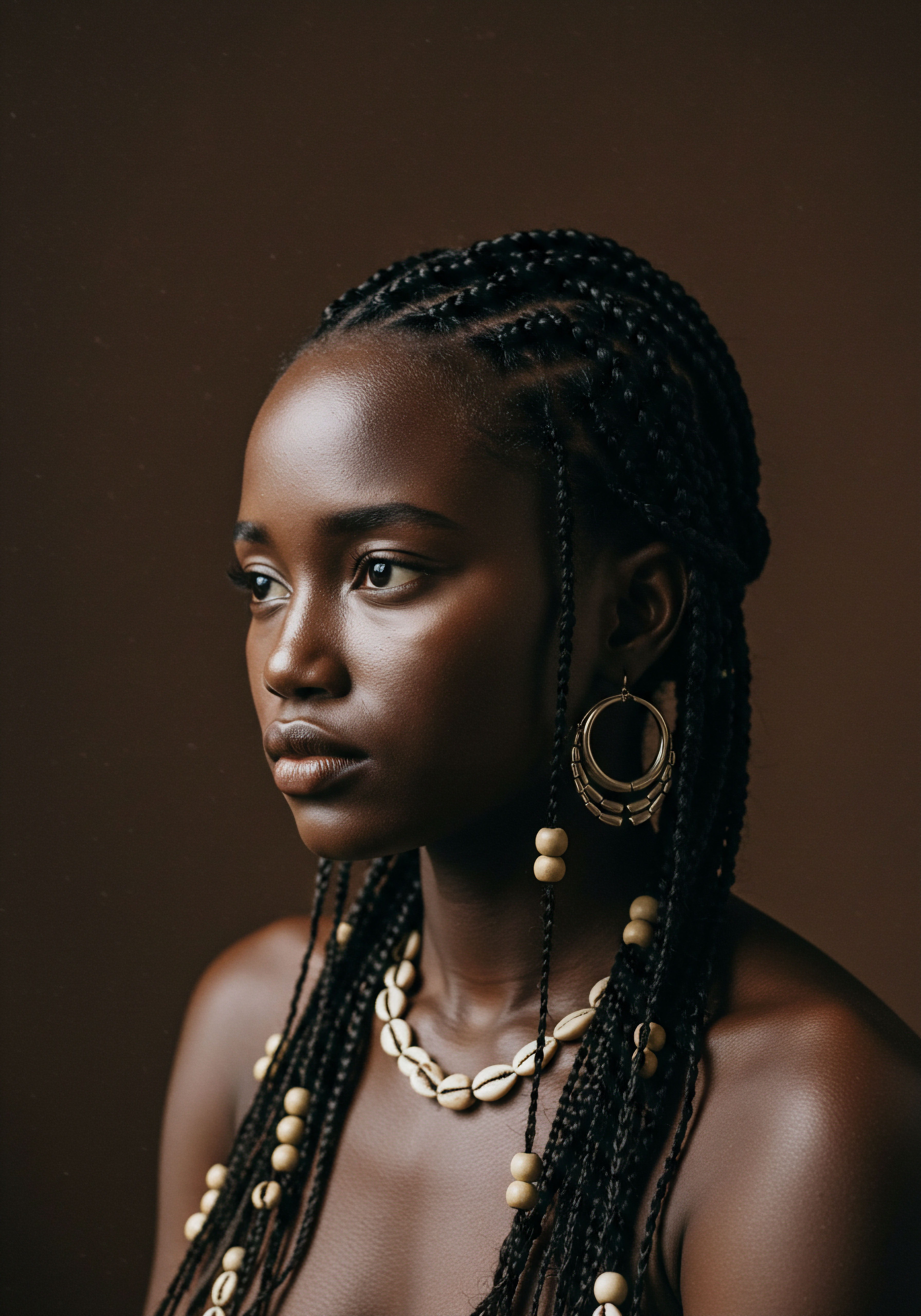
Reflection
As we journey through the intricate world of textured hair, the concept of Protective Styles Sleep stands as a gentle reminder of the profound connection between our heritage, our well-being, and the deliberate choices we make. It is a practice steeped in ancestral wisdom, refined by scientific understanding, and continually shaped by the vibrant tapestry of individual and collective experiences. The nightly ritual, far from being a mere chore, transforms into a sacred pause, a moment when the strands of our identity are tenderly cradled, allowing them to rejuvenate and prepare for the day ahead.
This quiet act of care speaks volumes about the enduring strength and beauty of textured hair, celebrating its unique character and the thoughtful devotion it inspires. It teaches us that true wellness extends even into our deepest slumber, nurturing not only our hair but also the spirit that resides within each curl, coil, and wave.

References
- Byrd, A. & Tharps, L. (2001). Hair Story ❉ Untangling the Roots of Black Hair in America. St. Martin’s Press.
- Chimbiri, C. (2017). The Story of Afro Hair. Scholastic UK.
- Dabiri, E. (2020). Twisted ❉ The Tangled History of Black Hair Culture. Harper Perennial.
- Lisse, A. (2020). Hair Satisfaction Among Black Adolescent Girls ❉ A Cross-Sectional Study. Journal of Body Image.
- McMichael, A. J. & Williams, S. L. (2010). Hair Breakage in Patients of African Descent ❉ Role of Dermoscopy. Skin Appendage Disorders, 6(3), 133–139.
- Mbilishaka, N. (2018). PsychoHairapy ❉ Using Hair as an Entry Point into Black Women’s Spiritual and Mental Health. Journal of Black Psychology.
- Redd, N. (2020). Bedtime Bonnet. Alfred A. Knopf Books for Young Readers.
- Rodgers, S. (2018). The Psychological Roller-Coaster of Alopecia. British Journal of Dermatology.
- Siedlecki, K. & Skayem, C. (2014). Social Support and Psychological Well-being in Individuals with Hair Loss. Journal of Cosmetic Dermatology.
- Thompson, V. L. S. (2009). African American Women, Hair Care, and Health Barriers. Journal of Community Health.
- Walker, Z. (2020). Know Your Hairitage ❉ Zara’s Wash Day. Self-published.